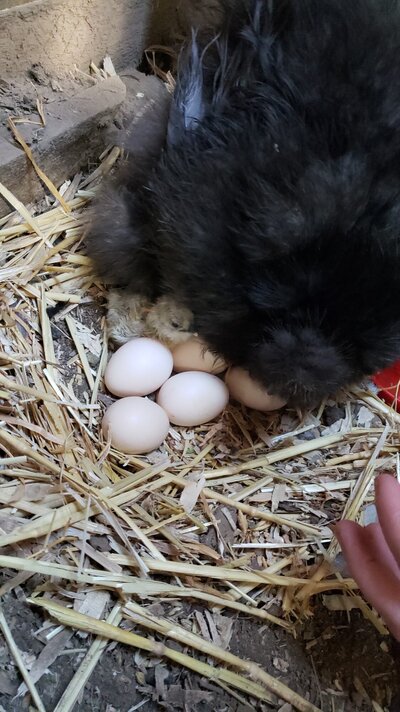Stinkin Cute Chickens
Chirping
- May 12, 2020
- 39
- 30
- 66
Hi! 2 or 3 weeks ago one of our hens began sitting on a couple of eggs. I am not exactly sure when. After a week or 10 days, it looked like she was shifted over so I reached under her and there were 4 more eggs for a total of 6. I guessed that around now would be the 21 days for the first eggs and I candled them all- I didn't realize you don't move after day 18. Two eggs were almost all black with a section of clear, I'm now guessing the air sac. Other eggs were entirely clear.
Should the eggs be put back under the hen in any particular orientation to be set for hatching? I just put them back as quickly as possible to keep them warm and not bug the hen but now I'm thinking maybe I should have been more calculated about it.
I was planning on letting nature take its course and not even checking on them but I obviously couldn't help myself and I want to assist if needed.
The hen is with her flock but not in the nesting boxes. Should I move her to protect any potential chicks from the rest of the flock?
Should the eggs be put back under the hen in any particular orientation to be set for hatching? I just put them back as quickly as possible to keep them warm and not bug the hen but now I'm thinking maybe I should have been more calculated about it.
I was planning on letting nature take its course and not even checking on them but I obviously couldn't help myself and I want to assist if needed.
The hen is with her flock but not in the nesting boxes. Should I move her to protect any potential chicks from the rest of the flock?





